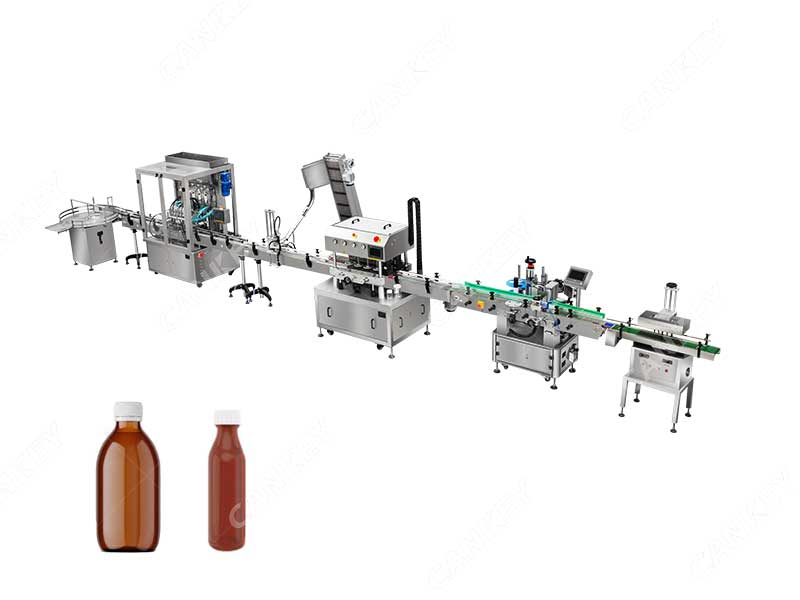In the modern manufacturing industry, automation plays a pivotal role in streamlining processes, optimizing productivity, and ensuring accuracy. One such area that benefits significantly from automation is liquid filling. Automatic liquid filling systems have revolutionized various sectors, from pharmaceuticals to food and beverage, by offering enhanced efficiency, consistency, and precision. This article delves into what is the process of automatic liquid filling, outlining its key components, advantages, and applications.
Understanding Automatic Liquid Filling Systems
Automatic liquid filling systems are sophisticated machines designed to fill containers with liquid substances without human intervention. These systems operate based on precise measurements and can handle a wide range of liquids, including water, chemicals, pharmaceuticals, beverages, and more. The process involves a combination of mechanical components, sensors, and programmable logic controllers (PLCs) that work together seamlessly to ensure accuracy and efficiency.
The Key Components of Automatic Liquid Filling Systems
- Hoppers or Tanks: These vessels store the liquid to be filled. Hoppers can be pressurized or gravity-fed, depending on the viscosity of the liquid being used.
- Conveyors or Feed Systems: These mechanisms transport containers (bottles, vials, cans) to the filling station in an orderly manner. Conveyor systems ensure a continuous and consistent flow of containers through the filling process.
- Filling Nozzles: The filling nozzles are responsible for delivering the liquid into the containers. These nozzles can be equipped with anti-drip features to prevent spillage between fills.
- Sensors and Level Control: Sensors, such as flow meters and level detectors, are incorporated to monitor the liquid level in the containers and ensure precise filling. These sensors provide feedback to the PLC, enabling real-time adjustments.
- Programmable Logic Controllers (PLCs): PLCs act as the brain of the automatic filling system. They receive input from various sensors and process the information to control the filling process, maintaining accuracy and consistency.

The Process of Automatic Liquid Filling
- Bottle Loading: Empty bottle are loaded onto the conveyor system, which carries them to the filling station.
- Bottle Alignment: The bottles pass through an alignment system to ensure they are correctly positioned under the filling nozzles.
- Filling Process Initiation: The PLC initiates the filling process once the bottles are in place. It opens the filling nozzles, and liquid starts flowing into the bottles.
- Liquid Level Detection: The sensors monitor the liquid level in each bottle, ensuring the correct volume is filled. If a bottle is not aligned properly or is faulty, the system will identify it and take corrective action.
- Liquid Cut-off and Anti-Drip: Once the predetermined volume is reached, the PLC closes the filling nozzles to stop the flow of liquid. Anti-drip features prevent any excess liquid from spilling after the cut-off.
- Bottle Exit: Filled bottle are then moved away from the filling station on the conveyor system, making room for the next set of empty bottles.
Advantages of Automatic Liquid Filling Systems
- Increased Efficiency: Automated filling systems can significantly increase production speed, reducing labor costs and enhancing overall efficiency.
- Accuracy and consistency: The precise measurement capabilities of automatic filling systems ensure that each bottle receives the exact amount of liquid, resulting in consistent product quality.
- Reduced Contamination: Minimizing human intervention reduces the risk of contamination, making these systems ideal for industries with strict hygiene requirements.
- Versatility: Automatic liquid filling systems can accommodate various container sizes and shapes, making them adaptable to different products and packaging needs.
Applications of Automatic Liquid Filling Systems
- Pharmaceuticals: In the pharmaceutical industry, these systems are used for accurately filling medications, syrups, and vaccines into vials, ampoules, and bottles.
- Food and Beverage: Automatic liquid filling systems are employed to fill beverages, sauces, oils, and other food products into bottles, cans, and pouches.
- Chemical and Industrial Products: They are used for filling chemicals, lubricants, solvents, and cleaning agents into containers of various sizes.
Automatic liquid filling systems have revolutionized manufacturing processes, providing industries with a reliable, efficient, and accurate solution for filling liquid products. With their ability to handle various liquids and containers while ensuring consistency and precision, these systems have become indispensable assets across a wide range of industries.

